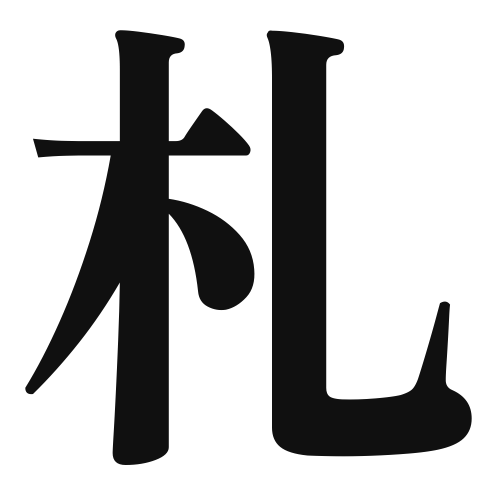1. Overview of Meaning
The kanji “札” (pronounced “satsu” or “fuda”) generally means “tag,” “label,” or “bill.” It is often used to refer to a piece of paper or card that carries information or serves as a marker.
2. Formation and Radical
The kanji “札” is a phonetic-ideographic character (形声文字) that combines the meaning of a “tag” or “label” with a phonetic component. The left side of the character is the radical “刀” (meaning “sword” or “knife”), which suggests cutting or marking, while the right side indicates the sound.
The radical for “札” is “刀,” which is associated with cutting or sharpness, reflecting the idea of marking or tagging something.
3. Examples of Usage
Common words and phrases that include “札” are:
- 価格札 (かかくふだ, kakakufuda) – price tag
- 名札 (なふだ, nafuda) – name tag
- 入場札 (にゅうじょうさつ, nyūjōsatsu) – admission ticket
Example sentence in daily conversation:
「この商品には価格札が付いていますか?」 (Kono shōhin ni wa kakakufuda ga tsuiteimasu ka?) – “Does this product have a price tag?”
4. Synonyms and Antonyms
Similar kanji with related meanings include:
- ラベル (raberu) – label (often used in a more general or modern context)
- チケット (chiketto) – ticket (specifically for events or travel)
Antonyms or contrasting kanji include:
- 消す (けす, kesu) – to erase or remove, which contrasts with the idea of marking or tagging something.
5. Cultural and Historical Background
The kanji “札” has significant ties to Japanese culture, particularly in the context of commerce and organization. Price tags and name tags are common in various settings, from markets to schools.
Proverbs and idiomatic expressions that include “札” are less common, but the concept of labeling and tagging is prevalent in discussions about identity and value in society.
